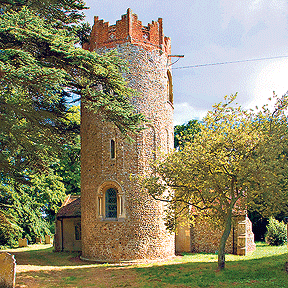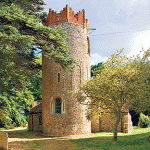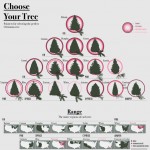The strange round towers of East Anglia
Sacred Mysteries: some say church towers in Norfolk and Suffolk began as defences against the Vikings. Stephen Hart knew the evidence better than anyone
St Peter’s church, Thorington, with 11 blind arcades in its flint sides Photo: alamy Christopher Howse[/caption]
The round tower of
St Peter’s church, Thorington, wears an octagonal parapet of red brick like a Christmas paper crown. It stands through a wooden gate from a quiet lane, and south of the marsh-marigold and ragged robin of Church Farm reserve, run by the Suffolk Wildlife Trust.
It’s near nowhere much, though an hour or so’s brisk walking would bring you from Halesworth railway station, or to Walberswick at the mouth of the river Blyth.
I thought the name Thorington referred to the god Thor, but onomasticians tell me it comes from “thorn trees”, and indeed some still grow there, to prove it.
The chief purpose of coming to Thorington is to have a good look at the flint tower. It has a particularly attractive feature. If one disregards the 16th-century brick party-hat, the tower has three storeys. The middle storey has blank recessed arches in the flintwork. That’s it, but it makes all the difference, visually.
There are 11 of these blind arcades. Each is just under two and a half feet wide, and the flinty pilasters separating each are about a foot wide. The skin of the wall, as it were, is not disturbed, for there is no dressed stone marking the recessed arches. Three windows, however, interrupt the ring of arches – one facing west, away from the church, and one on each side, to north and south. The funny thing is that the north window, and the one to the west (as may be seen in the picture above) are not in the centre of their recesses, but to one side. Some have argued that this proves they are later additions, since no reasonable builder would arrange them so. But Stephen Hart, an authority on round church towers, points out that such an argument would apply just as well to later insertion. And in any case, he observes, to insert a window headed by a stone arch into a wall of flints three or four feet thick entails work that would leave traces, especially on the inside, where a hole larger than the window would have to be made and the edges filled, with disturbance of the courses of flint in the wall. No such disturbance is seen at Thorington, so it may be taken that the windows, off centre as they are, belong to the original construction. Since these three windows are clearly Norman work, Hart argues that the tower is Norman too, not Anglo-Saxon as some presumed. He gives other clues to dating in his authoritative Round Church Towers of England. I was delighted to find a copy this year just after Mr Hart’s death in July. I’d written about him before, in 2008, when his book Flint Flushwork came out. Flint and round towers go together, and both go with East Anglia. Anyone from that region will find round towers no surprise, since there are 180 of them there, of which 150 are medieval and complete. Anyone not from East Anglia will find them strange, since England boasts only five other round church towers, three in Sussex and two in Berkshire. In places like Thorington, flint is the best you can hope for as building stone. A good shape for a flint tower with no dressing stones is round. Some East Anglian round towers contain local carstone, which occurs in small pieces, or puddingstone, a sort of conglomerate. Flint looks best to my eyes. A romantic idea about the these towers is that they were built before the churches attached to them, as defensive towers against the heathen Vikings. This theory was embraced by H Munro Cautley, the great expert on Norfolk and Suffolk churches. He likened them to Iron Age forts and declared that they originally had one entrance reached by a ladder. Stephen Hart proves this theory wrong. The towers were built with the churches, principally for the hanging of bells, an important function. A splendid association, of the kind in which English excels, called the Round Tower Churches Society, studies them and helps support them. You can find them on Twitter if you like.
Telegraph Columnists: daily opinion, editorials and columns from our star writers
(287)














